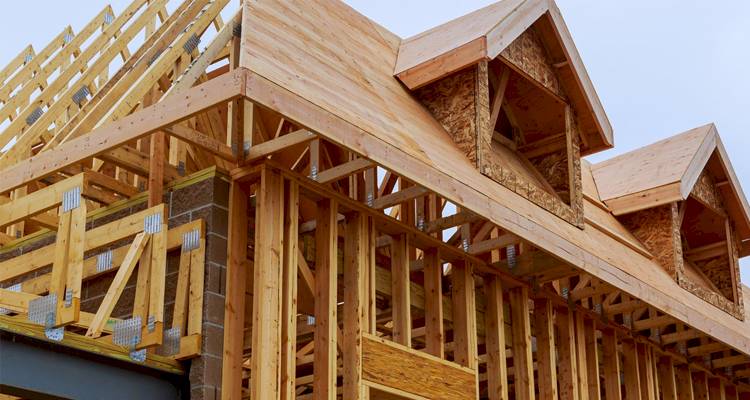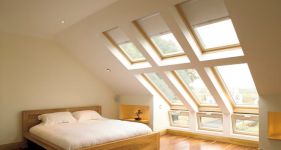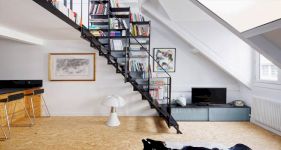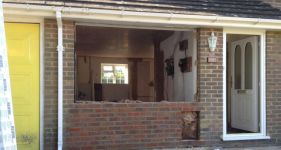Loft Conversion Guide
A loft conversion is one of the most effective ways to gain extra living space in your home. It transforms unused attic space into a bright, functional new room that adds real value to your property.
But it’s also a complex project. It’s not always clear what your options are and what's involved.
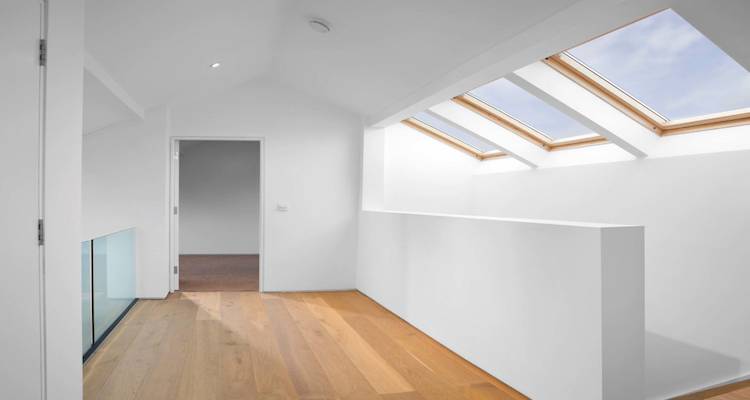
This guide is designed to help you get inspired with loft conversion ideas and understand the practical steps of the build.
It covers:
- Loft conversion ideas to inspire your new space.
- Which type of loft conversion (Dormer, Velux, Hip-to-Gable, or Mansard) suits your roof?
- What the build process looks like, from planning to decoration.
- How to navigate the rules on planning permission and building regulations.
For a full breakdown of costs, from labour to materials, see our dedicated Loft Conversion Cost Guide.
Table of Contents
- What is a Loft Conversion?
- Is Your Loft Suitable for Conversion?
- Types of Loft Conversion
- Loft Conversion Ideas
- What Are the Pros and Cons of a Loft Conversion?
- Budgeting for Your Loft Conversion
- How to Build a Loft Conversion
- How Long Does It Take to Build a Loft Conversion?
- Building Regulations or Planning Permission Approval for Loft Conversions
- Questions to Ask When Hiring a Loft Conversion Specialist
- FAQs
What is a Loft Conversion?
A loft conversion transforms your empty, unused loft into a fully functional living space. It's an effective way to add a new bedroom, office, or gym, or any other room you want, without changing the footprint of your home.
The process involves strengthening floor joists, adding insulation, windows, and a permanent staircase, all while meeting strict building regulations. For this reason, the work is almost always carried out by a specialist loft conversion team.
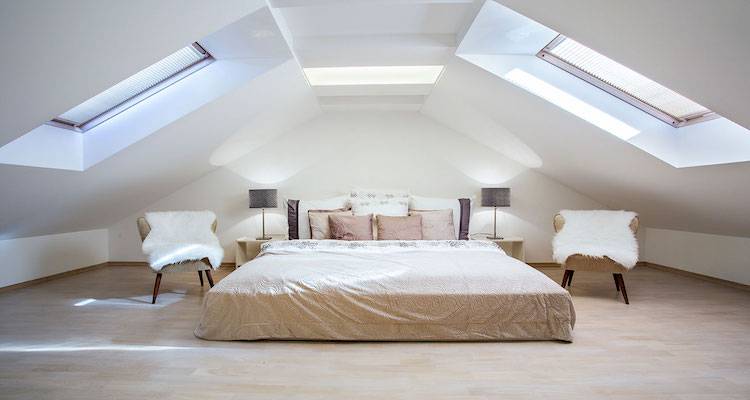
A professional installer will ensure your new loft meets all structural and safety requirements, giving you extra space that feels like a natural extension of your home.
Is Your Loft Suitable for Conversion?
Most lofts are suitable for conversion, but before planning your project, it's worth double checking a few key factors. These will not only determine if your loft is suitable for conversion, but also have an impact on what type of loft conversion you can have.
- Head Height — This is the most important factor. Measured from the bottom of the ridge timber (the beam at the very top) to the top of the ceiling joists below. You’ll need a minimum of 2.2 metres (7ft 2in) of clear height at the highest point.
- Roof Structure — Take a look at the shape and layout of your roof timbers. Traditional rafter roofs are common in pre-1960s homes and are ideal for conversion thanks to their steep pitch and open structure. Modern trussed roofs are found in most post-1960s homes and use “W”-shaped trusses that can make conversion more complex, often requiring additional structural work.
- Floor Area — The loft should be large enough to create a practical space. As a guide, aim for at least 5.5m wide (side to side) and 7.5m long (front to back).
If you're unsure about any of these, you can use MyJobQuote to get a quote from a loft conversion specialist near you, who will assess your lofts suitability for conversion.
Once your loft meets these criteria, the next step is to explore the different types of conversion available.
Types of Loft Conversion
Choosing the right type of conversion is the most important decision you'll make. It depends on your property type, your roof structure, and what you want to achieve. Here is a quick comparison of the four main types.
Below is a list of the different types of loft conversion for you to consider:
| Type | Best For | Headroom Created | Planning Permission? |
|---|---|---|---|
| Roof Light | Budgets (less build work), pre-1960s homes with existing headroom. | None (uses existing space). | Rarely needed. |
| Dormer | Creating the most usable space, adding a bathroom, any house type. | High (creates a new "box"). | Often falls under Permitted Development. |
| Hip-to-Gable | Semi-detached or detached homes with a "hipped" (sloped) side roof. | High (replaces a sloped roof with a vertical wall). | Often falls under Permitted Development. |
| Mansard | Getting maximum space in conservation areas, terraced houses. | High (creates a new, flat-roofed structure). | Almost always requires planning permission. |
Velux Loft Conversion
Best for: Homes that already have good headroom (at least 2.2m) and for homeowners who need the least disruptive and fastest build process.
A roof light conversion, often called a Velux loft conversion after the popular brand, is the simplest way to convert a loft. It involves no structural changes to the shape of the roof itself.
The work involves reinforcing the floor, adding insulation, and fitting windows that follow the existing roofline. This brings in light and makes the space habitable.
Our Velux loft conversion cost guide breaks down the full cost of labour, materials, and exactly what's included in the price for this type of build.
Pros:
- ✔ Least disruptive, as all work is contained within the existing roof.
- ✔ The fastest type of conversion to complete.
- ✔ Blends with the original house, as the roofline is unchanged.
Cons:
- ✖ Does not create any new headroom or floor space.
- ✖ Only suitable for lofts that are already very large.
- ✖ Sloping ceilings can make placing furniture difficult.
Dormer Loft Conversion
Best for: Virtually any home with a sloping roof. It is a flexible option that can be adapted for most properties and is almost essential if you plan to include an en-suite bathroom.
This is the most popular type of loft conversion in the UK. A dormer is a structural box that projects from the slope of your existing roof, most commonly on the rear of the property. Unlike a simple roof-light conversion, dormers add both headroom and vertical walls, making the space more practical.
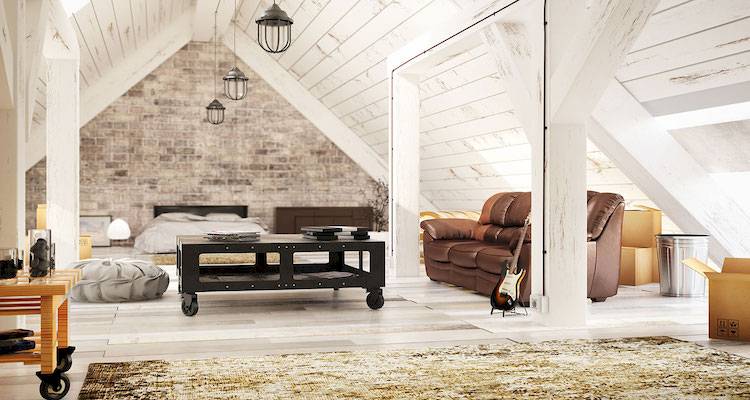
Dormers vary significantly in size and style, from a small "box" window to a full-width structure, adding significant space to your new room. The type you can build depends on your house type, local planning rules, and whether you are using 'Permitted Development' rights.
For a detailed breakdown of pricing, see our dedicated Dormer Loft Conversion Cost Guide.
Pros:
- ✔ Creates new headroom and floor space with vertical walls.
- ✔ Highly flexible design that can be adapted to most homes.
- ✔ Often falls under 'Permitted Development' if design rules are followed.
Cons:
- ✖ A large, flat-roof dormer can significantly change the external look of your house.
- ✖ A more complex and disruptive build than a simple roof light conversion.
Hip-to-Gable Loft Conversion
Best for: Semi-detached or detached houses with a hipped roof. It is often combined with a large rear dormer to create the maximum possible living area.
A hip-to-gable conversion is a major structural change designed for homes that have a "hipped" roof—a roof that slopes on the side as well as the front and back.
The conversion involves removing the sloping side "hip" and building a new, vertical "gable" wall in its place. This extends the roof's central ridge and creates a full-height, squared-off space, transforming the previously cramped, sloped side into a fully usable room.
Considering a hip to gable conversion for your home? See our see our detailed hip to gable loft conversion costs.
Pros:
- ✔ Dramatically increases the internal floor area and headroom.
- ✔ Creates a full-height gable wall, ideal for a large window.
- ✔ Can be combined with a rear dormer for a huge new space.
Cons:
- ✖ Only suitable for detached or semi-detached homes with hipped roofs.
- ✖ A significant structural project, more complex than a dormer.
- ✖ Not suitable for terraced houses.
Mansard Loft Conversion
Best for: Maximising space in terraced houses, particularly in cities like London. Its traditional style is often looked upon favourably by planning authorities in conservation areas.
A mansard conversion is the most significant structural change, involving the replacement of one or both slopes of your roof. It creates a new structure with a very steep (almost vertical) wall, usually at a 72-degree angle, and a nearly flat roof on top.
Because it's a major alteration, this type of conversion creates the maximum possible volume and gives the new room the feel of a full, extra storey rather than a loft room.
Due to it's complexity, a mansard is the most involved and costly loft conversion. To find out how the material, labour, and structural work add up, see our detailed Mansard Loft Conversion Cost Guide.
Pros:
- ✔ Creates the maximum possible volume and headroom.
- ✔ The near-vertical walls provide highly flexible, usable living space.
- ✔ Can be designed to look like a natural, original part of the building.
Cons:
- ✖ Almost always requires full planning permission due to the major changes.
- ✖ The most complex, disruptive, and longest build process of all types.
- ✖ Involves major, large-scale changes to your roof structure.
Loft Conversion Ideas
When it comes to a loft conversion, the possibilities are endless. The only limit to what you can achieve with your loft conversion is your imagination.
It’s a good idea to take a look at the measurements for your loft conversion before deciding what you’re going to use the extra space for. In many cases, you may end up moving the rooms around in the house. Some of the most common uses for a loft conversion are listed below:
Master Bedroom with En Suite
A loft space can provide a great area away from the rest of the house. This is what makes it an appealing choice for a master bedroom with an en-suite, as it provides you with your own little living space away from the other parts of the home.
Loft conversions can be quite large, so you can build a nice large bedroom and still have room to install an en suite to go with it.
Children’s Bedroom
A loft conversion also makes a great children’s bedroom. If the loft space you end up with is quite narrow, it may be a better space for a child’s bed.
Also, some loft conversions have sloped roofs, which could be an issue for adults but won’t be as much of an issue for small children. Many children also like the idea of having their own space at the top of the house where they can get away from the rest of the house.
Playroom
As your family grows, you may want to consider turning your loft space into a playroom. Providing children with a whole room dedicated to toys and games is often a dream come true.
If your loft conversion has a sloping ceiling, this can provide a lot of opportunity for building forts or hiding. You can create a space where your children’s imaginations can truly run wild.
Gym
Another popular option when it comes to a loft conversion is to create a gym. You can create a space dedicated to working out that is completely closed off from the rest of the house.
You will no longer need to worry about distractions during your workouts. You could also put a shower up there so you can get clean and dressed before re-entering the rest of the home.
Guest Room
A loft conversion is a great space to put a guest room. As a guest room is not always used every single day, the loft provides a great area that can easily be closed off when it’s not in use.
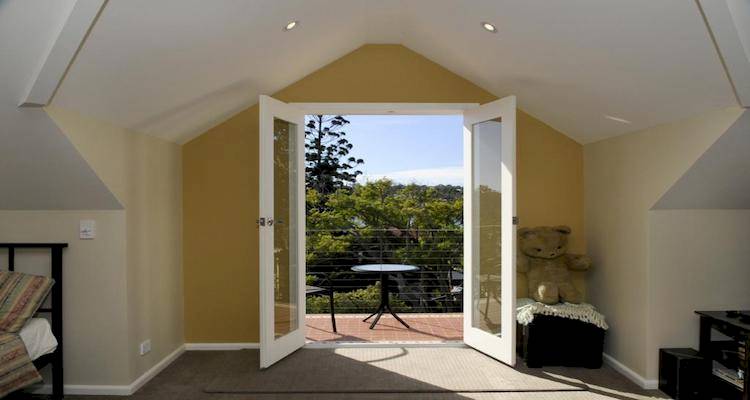
Plus, your guests will feel like they have their own special place in your home whenever they come to stay, making them feel much more comfortable.
Office
A loft conversion can also make a great office space. As the room is tucked away at the top of the house, you’ll be in your own space away from the rest of the family and away from home life.
Distractions can become a thing of the past, and you can easily differentiate between your workspace and your home space. This can help to create a much healthier work-life balance.
Bathroom
With your loft space, you can easily create a luxury bathroom retreat. You’ll have a lot of space to work with, so you could create a gorgeous luxury spa space that is spate from the rest of the home.
You won’t need to worry about disturbances while you soak in the tub, as you’ll be tucked away right at the top of the home in your own space.
Home Cinema
Another great use for a loft conversion is a home cinema room. This can add a luxury and unique touch to your living space. Going upstairs to watch a movie in a special dedicated area can make it into a fun and special experience.
What Are the Pros and Cons of a Loft Conversion?
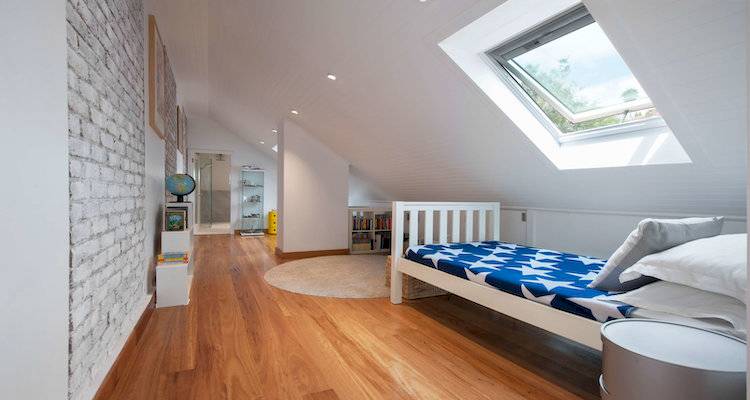
There are several advantages and disadvantages that you may need to consider when building a loft conversion. Below is a list of the major pros and cons that come with adding a loft conversion to your home:
Pros
Extra Room and Space
As your family grows, the extra space that a loft conversion can provide is a real blessing. Also, if you have a small home, the extra space can open up several new room possibilities.
If you’re happy with where you live but just want a little bit of extra room, then a loft conversion is the perfect option for you.
Cheaper than an Extension
A loft conversion will usually work out slightly cheaper than an extension of the same size. This is because there is not as much structural work involved with a loft conversion as there is with an extension.
You won’t Lose Outdoor Space
If you choose to build an extra room in the loft rather than as an extension, then you won’t need to worry about losing any of your outdoor space. Extensions tend to take up a chunk of the garden or driveway, leaving you less room outdoors. Alternatively, a loft conversion won’t extend out from your normal property line.
Cons
Sloping Ceilings Can Be a Challenge
Many loft conversions will feature sloping ceilings. This could be an issue if you’re planning on spending a lot of time up there. This could also cause issues with space as you may struggle to fit certain pieces of furniture around the slopes.
Risk Losing Storage Space
If you currently store many items in your loft space, you will need to find somewhere new to put these things once your loft conversion is underway. This may mean that you will have to use up space in other rooms of the house to store all of those items that were once tucked away in the loft.
Not Suitable for All Properties
Some houses cannot have a loft conversion due to the shape of the roof. In these cases, the roof may need to be remodelled, which can come at a very high cost.
There are also tight regulations around changing the structure of the roof, so this is something you may need to be aware of.
Budgeting for Your Loft Conversion
The final cost of a loft conversion depends on many factors, including the type you choose, the size of your property, and where you live in the UK.
Because the price can vary so significantly, we have created a dedicated, in-depth cost guide. It provides a full breakdown of costs by conversion type, labour, materials, and even region.
For an up to date detailed estimate, see our complete Loft Conversion Cost Guide.
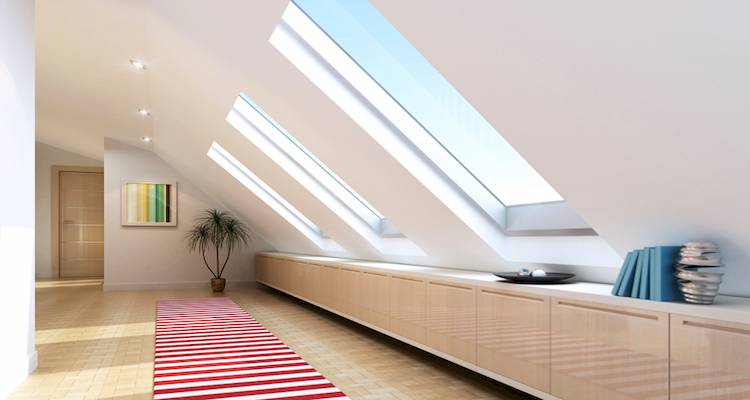
How to Build a Loft Conversion
There are many steps involved with building a loft conversion. Below is a brief overview of each of the steps that you can expect when it comes to installing a loft conversion at your home:
Week 1
During the first week, once your loft conversion has been completely planned out, your contractors will erect scaffolding ready to start the work. All of the materials for the job will also be brought to the site, and the roof will be opened up.
Week 2
If your loft conversion plans include changes to the roof structure, this will happen during week two. If needed, extra supports will be installed to support the roof and upper portions of the home during the construction stage.
If you are getting a roof light conversion, the windows will be installed during this week. For a dormer conversion, the dormer will be constructed during week two.
Week 3
During week three, all of the external work that’s needed will be finished. Any construction on the roof will be finished, and all tiles will be replaced. Insulation will also be added to the roof during this stage. Internally, the loft will be ready for any electrical or plumbing work that needs to be completed.
Week 4
If there are any windows left to install, these will be added now. The floor will be laid at this point, and any ventilation that is needed will also be incorporated. Plasterboard will be fitted, and all internal walls will be built.
Week 5
On week five, the staircase will be added that leads to the loft conversion. If you are having a bathroom fitted, this will also be installed at this time.
During this stage, you can also expect all of the electric work to be completed. Towards the end of the fifth week, doors will likely be hung, plaster will be skimmed, and the skirting boards will be fitted.
Week 6
In the sixth week, any jobs that have been left unfinished will be completed. Any decorating that needs to be done will be completed this week, and the scaffolding will be removed.
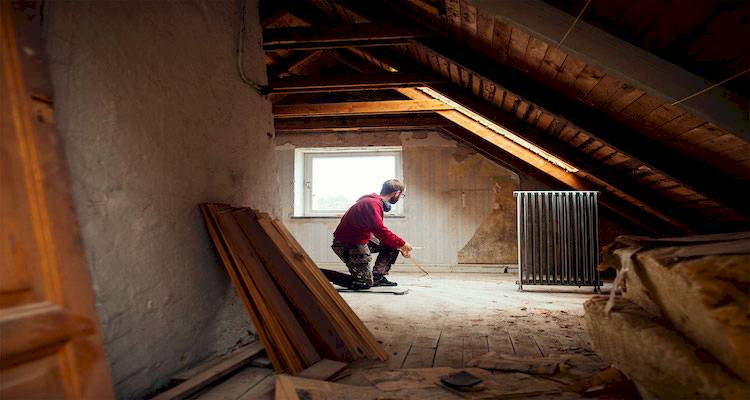
It’s important to note that the schedule above is an estimate and won’t be accurate for every job. This guide assumes that each job is completed in the minimum possible time and that each job can start right away after the previous one is complete.
For a more accurate representation of timescales, you should speak to your contractor and ask for a detailed overview of what you can expect to be completed at each stage.
How Long Does It Take to Build a Loft Conversion?
The time it takes to build your loft conversion will depend on several factors, including the type of loft conversion, the size of the conversion area, and the number of people working on the job.
When it comes to a loft conversion, you can usually expect there to be at least 2-3 people working on the project at any one time.
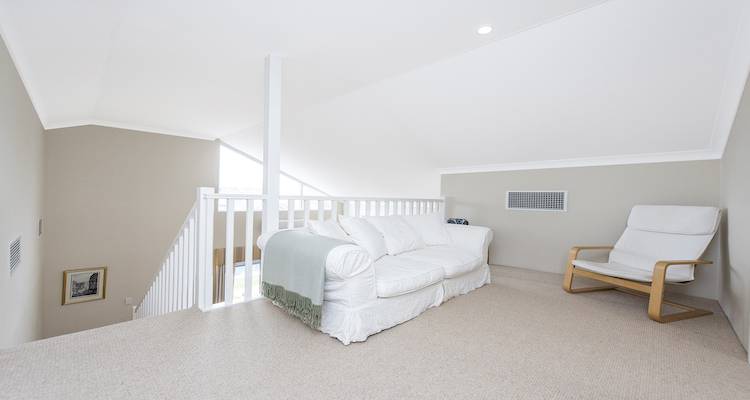
On average, you can expect a simple loft conversion to take around 4-6 weeks to complete. More extravagant or difficult jobs could take around 8-10 weeks to complete.
When you contact contractors for a quote on the job, they will usually be able to provide you with some pretty accurate timescales according to your specific loft conversion job.
Building Regulations or Planning Permission Approval for Loft Conversions
A loft conversion is a major structural project, and it must comply with several important regulations. It's common to confuse Planning Permission and Building Regulations, but they are two separate requirements.
Planning permission typically deals with the appearance and the scale of your conversion. Where as building regulations deal with the safety and structural integrity of the work.
Planning Permission and Permitted Development
In most cases, you won’t need planning permission to build a loft extension as it is covered under permitted development. This means you have an automatic right to build, provided your project meets a strict set of rules:
Simple roof light conversions rarely have issues, but for roof enlargements (like dormers and hip-to-gable conversions), you must meet the following criteria:
- The conversion should not extend beyond the existing roof slope at the front of the house.
- The total space created from all extensions should not exceed 40m³ for a terraced home or 50m³ for a detached or semi-detached home.
- The maximum height of the home should not be increased, including the roof.
- The conversion should not overhang the original walls.
- Side-facing windows must not be clear glass (must be obscure-glazed) and any opening parts must be 1.7m above the floor.
- You should use similar materials to the original home for the construction.
- You cannot add any verandas, platforms, or balconies.
- With the exception of hip-to-gable conversions, the roof extension should be set back at least 20cm from the original eaves.
When Permitted Development Rights Do Not Apply
It is crucial to know that these PD rights do not apply to all properties. You will almost certainly need to apply for full planning permission if your home is:
- A flat or maisonette: Permitted Development rights do not apply to these property types.
- A listed building: Any alterations will require separate Listed Building Consent.
- In a 'designated area': This includes Conservation Areas, National Parks, and Areas of Outstanding Natural Beauty (AONB), where PD rights are restricted.
If your property falls into any of these categories, you must contact your local planning authority for guidance before starting any work. Your builder or loft conversion specialist will be able to help you.
Building Regulations
Even if you don't need planning permission, your new loft conversion will have to adhere to building regulations. Building regulations are there to ensure the new conversion is structurally sound, safe for use, and is habitable.
Key areas include:
- Structural Strength: Ensuring the new floor joists are strong enough and any new beams are correctly installed.
- Fire Safety: This is critical. It includes fitting interconnected smoke alarms, new fire-resistant doors, and ensuring there is a safe escape route from the new room.
- Staircase Design: The new stairs must be safe, with adequate headroom, width, and a suitable pitch.
- Insulation: The room must meet standards for thermal and sound insulation.
The building regulations for a loft conversion will dictate some of the materials that must be used for the work and how the conversion is constructed. It will also often determine the layout. For example, you should have doors to each room at the top of the staircase.
Your contractor should manage this process, but you are ultimately responsible. Ensure you get a final completion certificate, as you will need this if you ever sell your home.
Party Wall Agreements for Loft Conversions
This is a legal requirement that is often overlooked. If you live in a semi-detached or terraced house, you share a "party wall" with a neighbour.
Because a loft conversion involves cutting into beams and structural elements that may be connected to this wall, you must:
- Formally notify your neighbour by serving a Party Wall Notice in writing. This must be done at least two months before any work begins.
- If your neighbour agrees, you can proceed.
- If they do not agree (or do not respond), you must hire a party wall surveyor to draw up a Party Wall Award. This legal document outlines how the work will be done to protect both properties.
Always talk to your neighbours about your plans early on, but be aware that this formal notice is a legal requirement.
Questions to Ask When Hiring a Loft Conversion Specialist
You may need to ask several questions when looking for the right contractors to carry out your loft conversion job. Below is a list of questions that you should consider asking when looking for the right workers for the job:
- Does the contractor possess any qualifications relating to building loft conversions?
- Does the tradesman have insurance? Will the insurance cover property damage, personal injury, and a guarantee?
- Does the contractor have any evidence of previous work? Ask them for testimonials or pictures of loft conversions that they have worked on in the past.
- Does the tradesman offer any guarantees with their work? Will they fix any issues that arise? What does the guarantee cover, and how long does it last?
- How many tradespeople will be working on the job? What are the expected timescales?
- Ask for a breakdown of costs to ensure you’re not overpaying for any particular parts of the work.
- Does the contractor provide all tools and materials? Is there anything that you will need to prepare or obtain before the work starts?
- Does the contractor have experience in building the particular type of loft conversion that you’re looking for?
FAQs
Can You Build a Loft Conversion in a Flat?
If the building company owns it, you won’t be able to alter the loft. You must also make no alterations to the roof or the external portions of the building. If you believe that you are entitled to build a loft conversion in your flat, several building regulations must be followed.
You may also be required to get planning permission. If you are unsure about the circumstances, it’s always best to check with your building management and your local council to ensure that that work can go ahead before you start enquiring with contractors.
Can I Use a Loft as a Bedroom?
Will it be big enough for a bedroom? Will the roof slopes cause an uncomfortable living environment? These are all things to consider when deciding whether to turn your loft conversion into a bedroom.
If I Carry Out the Loft Conversion Myself, Will I Need Insurance?
Even if you don’t believe you’ll need the insurance, it’s always worth taking it out anyway, just for your own peace of mind.



